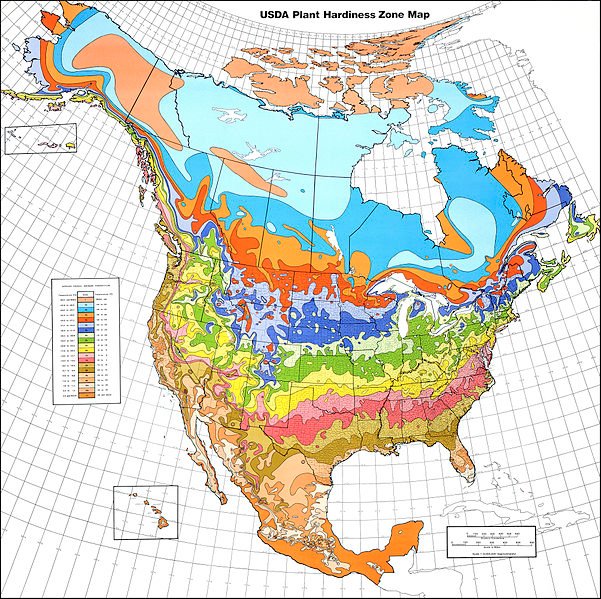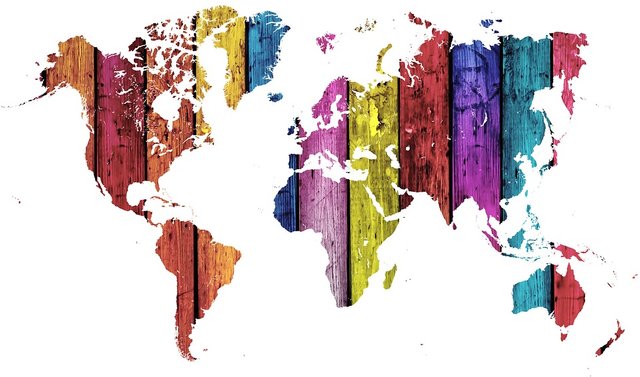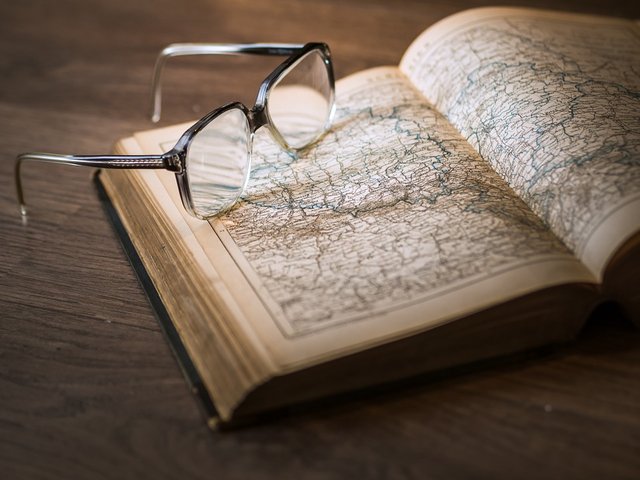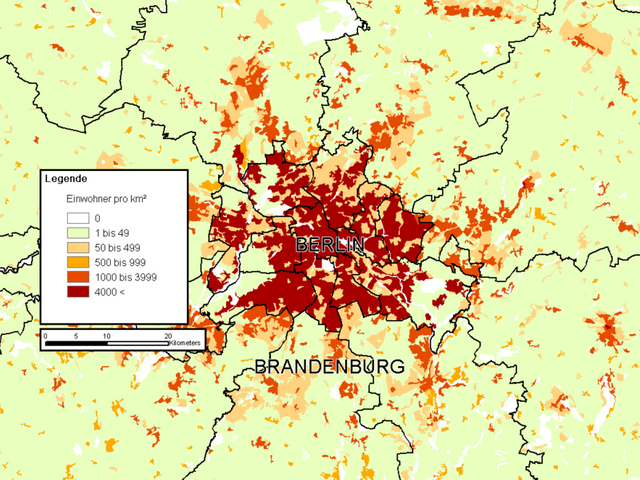INTRODUCTION TO CARTOGRAPHY - DASYMETRIC MAPPING
How are you doing today? I hope everything's fine. Everything is going great as far as I am concerned, only problem is I have been quite busy lately. Too many things going on that I need to handle and too much work I don't want to miss out on, so it goes without saying that my time is limited. This is also the main reason why I haven't published another part of this series in the last twenty days, so here I am to make it up to you. Let's waste no more time and get this started!
As promised in a previous Cartography post regarding the elements of Choropleth mapping, this time we will move on to the next category of thematic maps, which are broadly known as Dasymetric maps. We are going to elaborate on the fundamental differences between Choropleth and Dasymetric maps and the methods followed by Cartographers in the creation of suitable surface units. Moreover, we will talk about the two main categories of variables utilized in the process of gathering spatial data, so stay focused!
This is just a personal note for all of you who are new to this blog; this is just an introductory series about Cartography, which is the scientific field of creating 2D depictions of our 3D world with precision. This means that I am basically sharing broad information gathered through years of study and research in a simplified manner, so that nobody gets too bored reading this post! There's always a high chance of learning a thing or two by reading till the end of this publication, so stay tuned!
Nature & Geometry
As explained in the previous parts of this series, Choropleth mappings represent the original geometric structure of the units utilized in the process of gathering spatial data. It goes without saying by now that there are various cases in which those units do not match the characteristics of a geographic distribution efficiently. As a result, the Choropleth process might lead to an end product of low quality in such cases, mainly due to the fact that vast amounts of spatial information will inevitably not be included in our projection. However that won't stop Cartographers from achieving their goal of presenting their data efficiently and precisely, as there is a tool known as the Dasymetric process which makes things a bit less complicated. Let's see how.
Dasymetric maps are built with the utilization of the exact same types of spatial data used in the creation of simple Choropleth maps in most cases. However there are some fundamental differences, one of the most significant of which is the fact that in Dasymetric maps the boundaries between successive units are totally unrelated to the boundaries of surface units. The most obvious visual characteristic of Dasymetric maps is the combination of uniformal surfaces and zones of radical variation. In order to create those uniformal surfaces, Cartographers often use different sources of information regarding the geographic distribution being studied, by utilizing various tools of spatial analysis like maps of related phenomena etc.
Having gathered information from external sources, Cartographers are now ready to proceed to the next step, which basically includes the design and creation of new uniformal units that can be used in order to achieve a more efficent approximation for the actual nature of the surface variation of our geographic distribution. It is worth noting at this point that the definition of the dasymetric mapping boundaries is probably the hardest task in this job. The utilization of information regarding the spatial correlations of the data being used is necessary in order to define our precious dasymetric mapping boundaries. Geographic Information Systems are tools which can be used to process geographic databases that include all sorts of spatial information needed in this endeavour.
Constraint Variables
The first category of variables that are used in the process of gathering information, which in return will enable Cartographers to access deeper knowledge regarding the characteristics that are being mapped, is the category of Constraint Variables. These variables are used in order to set upper limits in place regarding the amount of mapped phenomena that can be represented on a surface of limited, given dimensions. For instance, in cases where we are studying the land-use planning of specific areas, we can utilize data regarding the precise geographic location of places with different land uses in order to accomplish efficient distribution of the entire area's land uses. Therefore, we use percentages as upper limits for any specific type of land use, making sure to take into consideration the area's topography and natural environment.
Dasymetric maps provide the observer with a much more detailed analysis regarding the characteristics of the area of the natural terrestrial surface being studied. One of the main reasons why is the fact that the utilization of constraint variables in GIS operations enables Cartographers to create visual representations of uniformal surfaces with boundaries where radical variations are observed, thus assisting the creation of quality Dasymetric maps. Let's take a look at a fancy Dasymetric map and move on to the next category of variables.
Related Variables
The second category of variables that are used in the process of gathering information, with the aim to enable Cartographers to gather technical information regarding the characteristics that are being represented, is commonly known as the category of Related Variables. Related Variables are practically nothing but geographic phenomena that depict predictable variations in spatial correlation with the geographical phenomenon that is being mapped. In cases where our external sources of data are topographic maps, Cartographers need to possess knowledge regarding remote sensing applications and techniques in order to reach safe conclusions concerning the definition of the boundaries between areas with different land-use planning.
The utilization of Related Variables will have a less dramatic effect with a purely statistical nature on any projection; such variables enable Cartographers to make better decisions regarding the precision of the geographic location of the data being used, even though applying them correctly can be a really difficult job in the creation of Dasymetric Maps. Once again, rather useful GIS operations come in handy and assist Cartographers in their efforts regarding the utilization of Related Variables.

Alright everyone, that's it for today. Thanks for taking the time to read my work, another part of my Introduction to Cartography series has come to an end. There's still plenty of stuff to talk about, so make sure to follow me and stay tuned. If you have any questions regarding anything you read on this blog, please do make sure to let me know in the comments below and I will do my best to provide prompt and detailed answers. More Engineering stuff regarding Cartography and Geology coming out within the next days, so stay tuned and follow me for more!
PREVIOUS PARTS OF THE SERIES:
IMAGE SOURCES:
REFERENCES:
University Textbooks & Course Lectures:
- Χαρτογραφία Ι/ Cartography I -TSOULOS(National Technical University of Athens, School of Rural & Surveying Engineering, Course Lecture Notes)
Internet Links:
https://www.colorado.edu/geography/leyk/geog_4203/readings/mennis%20and%20hultgren%20CaGIS.pdf
https://prism.ucalgary.ca/bitstream/handle/1880/45758/2001-693-16.pdf?sequence=2&isAllowed=y
https://gisgeography.com/choropleth-maps-data-classification/
https://www.tandfonline.com/doi/abs/10.1559/152304006779077309?journalCode=tcag20





Another great entry in you collection.
If I may, maybe could it be good at some point, in particular for the new user, to give the table of contents with a 5-line description of each post. Actually, this could be form a summary post of its own, maybe after chapter 30 or so. This was just an idea, in passing ;)
Thanks for passing by, Lemouth!
That's a wondeful idea to be honest, I might have to make 2 summary posts with a paragraph describing each part of the series.
Thanks for the constant support and valuable feedback :)
The nice thing with one single summary post is that you can easily refer to it when commenting. I have one of such posts for some of my particle physics articles and it is really useful.
I see, I stumbled upon your summary back when you posted it and it inspired me to do the same! Plus I got to read some parts I had missed. Thanks for the reminder! I just started working on the next part of this series and I will be uploading the summary post within the next week.
I probably also have missed some parts of your blog too. But my time is really too limited at the moment to catch up ;)
I appreciate your interest so much! I know you are a busy person, so the fact that you take the time to visit my blog is a true honor for me.
Hi @lordneroo!
Your post was upvoted by utopian.io in cooperation with @steemstem - supporting knowledge, innovation and technological advancement on the Steem Blockchain.
Contribute to Open Source with utopian.io
Learn how to contribute on our website and join the new open source economy.
Want to chat? Join the Utopian Community on Discord https://discord.gg/h52nFrV
Thanks for the support!
This post has been voted on by the SteemSTEM curation team and voting trail in collaboration with @utopian-io and @curie.
If you appreciate the work we are doing then consider voting all three projects for witness by selecting stem.witness, utopian-io and curie!
For additional information please join us on the SteemSTEM discord and to get to know the rest of the community!
Big thank you to the most amazing scientific community on the Steem Blockchain for the constant support!
Φανταστικό!!! Καλό απόγευμα…
Thank you Nick!
Congratulations! This post has been upvoted from the communal account, @minnowsupport, by lordneroo from the Minnow Support Project. It's a witness project run by aggroed, ausbitbank, teamsteem, someguy123, neoxian, followbtcnews, and netuoso. The goal is to help Steemit grow by supporting Minnows. Please find us at the Peace, Abundance, and Liberty Network (PALnet) Discord Channel. It's a completely public and open space to all members of the Steemit community who voluntarily choose to be there.
If you would like to delegate to the Minnow Support Project you can do so by clicking on the following links: 50SP, 100SP, 250SP, 500SP, 1000SP, 5000SP.
Be sure to leave at least 50SP undelegated on your account.
You are always welcome to join us and get more recognition for your posts. You can find more information about geopolis here or join our Discord server.
Thank you so much for the upvote!
Hi @lordneroo!
Your post was upvoted by @steem-ua, new Steem dApp, using UserAuthority for algorithmic post curation!
Your UA account score is currently 3.863 which ranks you at #4154 across all Steem accounts.
Your rank has improved 103 places in the last three days (old rank 4257).
In our last Algorithmic Curation Round, consisting of 279 contributions, your post is ranked at #59.
Evaluation of your UA score:
Feel free to join our @steem-ua Discord server
Thanks for the valuable feedback!